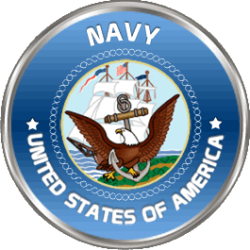
 |
|
|
||
|
Thomas Davis Davies |
||||
|
Engagements: • World War II (1941 - 1945)• Korean War (1950 - 1953) |
||||
| Biography: | ||||
|
Thomas Davis Davies Thomas Davis Davies was born on 3 November 1914 in Cleveland, OH. Prior to entering the U.S. Naval Academy in 1934, Davies attended Case Institute for two years. After graduating from the Academy in 1937, he was assigned to the cruiser USS Portland, stationed in the Pacific. By 1939 he was transferred to the USS Wichita. While at the Academy he had studied naval ordnance and gunnery. While involved in gunnery, he realized the difficulty the Navy was having with accuracy. He realized the solution was to develop an upgraded stereoscopic range. He developed a workable model of the range finder which, by the end of the war, was used on all ships with large caliber guns and on ships used for coastal bombardment during the Korean War. He elected to pursue aviation and, after completing flight training in late 1942, was designated a Naval Aviator. He was assigned to Bombing Squadron 129 (VPB-129) as Executive Officer. Bombing Squadron 129 was assigned the protection of coastal shipping along the coast of South America. On one submarine surveillance mission, Davies engaged the German Submarine U-604 on which he scored a direct hit, sinking the submarine. He was awarded the Distinguished Flying Cross for his actions. His next assignment was as Commanding Officer of the U.S. Brazilian Training Unit. During that tour of duty he became interested in naval aircraft development. He was transferred to the U.S. Navy's Bureau of Aeronautics as the Patrol Plane Contracting Office in Washington, DC. His mission was to research and help select the next land-based patrol plane to replace the PV-1 Ventura. His assistance to the engineers of Lockheed and his insistence on extended flight duration for Navy patrol aircraft, laid the groundwork for a subsequent world distance record in heavy propeller driven aircraft. While serving as the head of the Patrol Plane Desk in the Bureau of Aeronautics, he originated the idea of modifying the first production model of the new Lockheed P2V for a long distance flight to demonstrate the ability of Navy air antisubmarine warfare forces to reach targets anywhere in the world. With the approval of the Chief of Naval Operations, Admiral Chester Nimitz, Davies developed and executed the plan, establishing a distance record of 11,256 miles which he held for sixteen years. Davies continued to research and develop aeronautical innovations and, by 1948, now-Commander Davies was Commander of Task Group 68.7, which piloted carrier launchings of larger planes with extended distance capabilities. For a short time Davies held the world's piston aircraft speed record from the East coast to the West coast. As a member of Admiral Robert E. Byrd's staff, Davies continued to distinguish himself as a thinker, innovator and engineer. He developed the first set of skis for tricycle landing gear aircraft and developed the Sky Compass for navigation at the Poles where conventional instruments were unreliable. The new compass was later incorporated into celestial navigation equipment used by commercial airlines for early trans-polar flights to Europe. Because of this invention he received the Thurlow Award for the Outstanding Contribution to the Science of Navigation for 1949 from the Institute of Navigation. Davies was then transferred to Naval Air Station, Sand Point, Seattle, WA, on the Staff of the Commander, Fleet Air Mediterranean where he remained until 1954. In the early 1960s he commanded the fleet oiler USS Caliente deployed in the Western Pacific. In 1963-64 now-Captain Davies commanded the Naval Air Station at Norfolk, VA. He later returned to Washington, DC and was promoted to Rear Admiral. Davies joined the staff of the Secretary of the Navy where he remained from 1965-67. In 1967 he was assigned as Commander Carrier Division 20 and it was in this capacity that he continued to develop his surface surveillance command and control system. In 1969 Davies was made the Chief of Naval Development/Chief Oceanographer of the Navy. In this position he was able to continue to develop weapons systems from ideas conceived while a Carrier Division Commander. In 1973 Admiral Davies retired from the Navy. In Retirement After retiring, he accepted a Presidential appointment as Assistant Director of the U.S. Arms Control and Disarmament Agency. He later would become Assistant Director for Multilateral Affairs. In late 1977 the Admiral completed his development of his "Star Sight Reduction Tables for 42 Stars" and "Assumed Altitude Method of Celestial Navigation." Admiral Davies was considered one of the most innovative men of his time and his inventions revolutionized navigation systems around the globe. Death and Burial Rear Admiral Thomas Davis Davies died on 21 January 1991 in Saint Martin. He is buried at the U.S. Naval Academy Cemetery in Annapolis, MD. http://www.findagrave.com/cgi-bin/fg.cgi?page=gr |
||||
| Honoree ID: 2412 | Created by: MHOH | |||
Ribbons
Medals
Badges
Honoree Photos
 |  |  |
 |  |
 |


